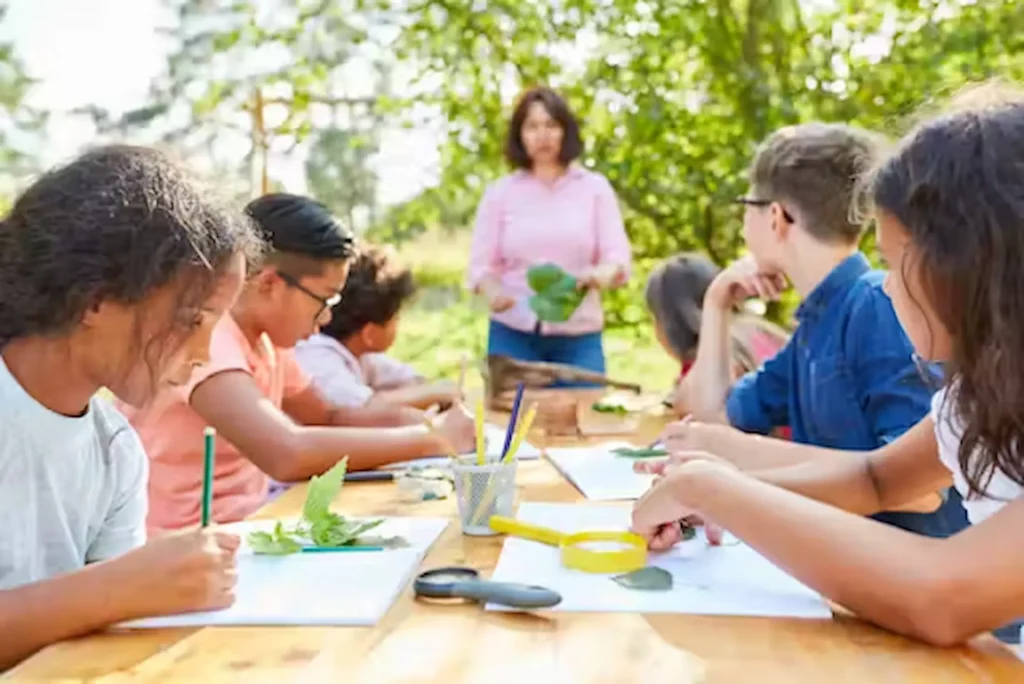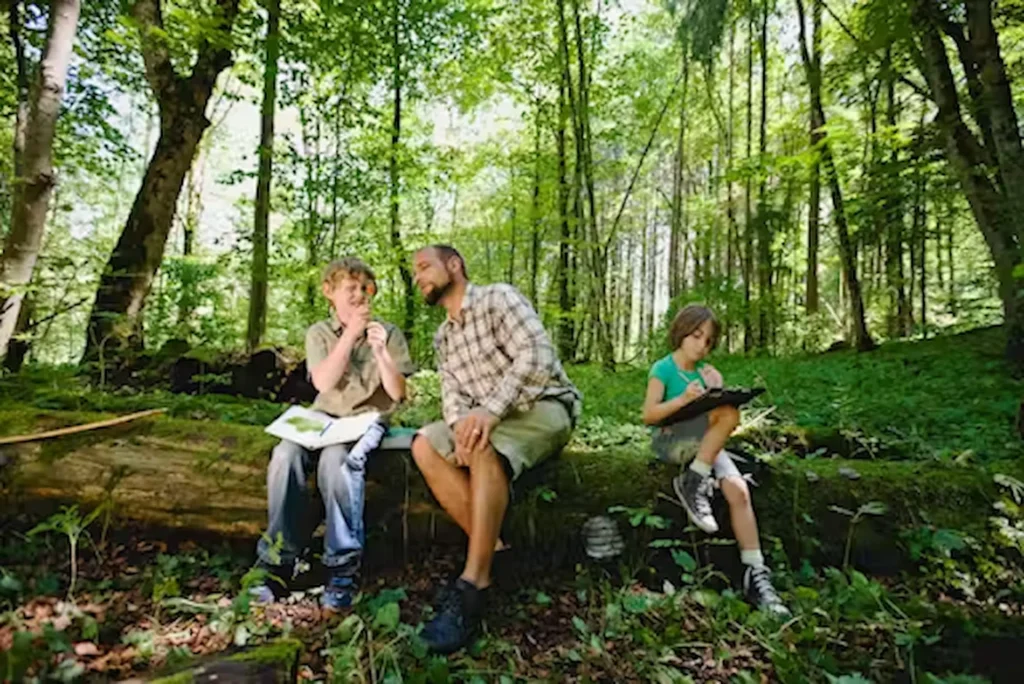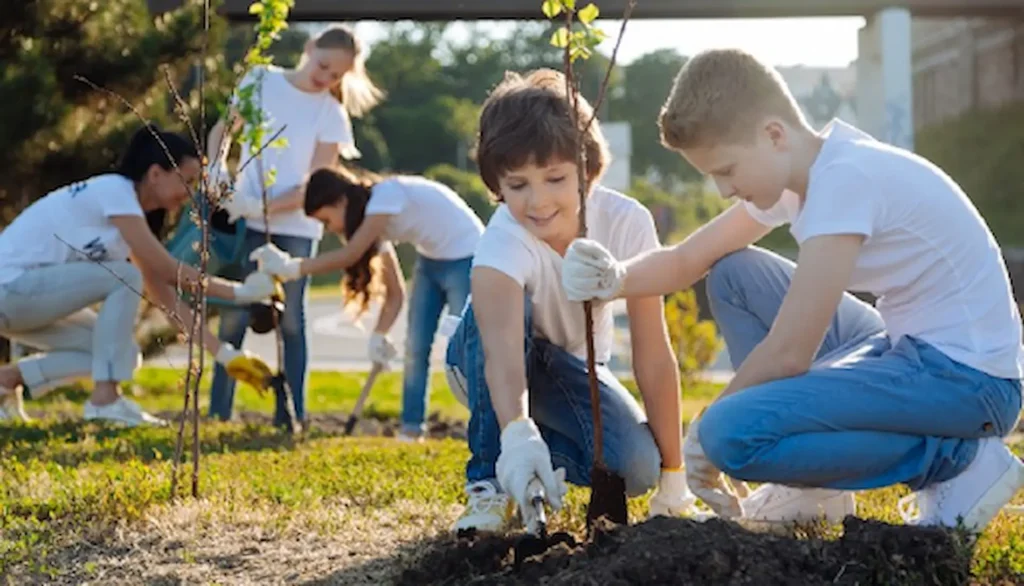Climate change is one of the most urgent global challenges of our time, yet many students in the United States graduate from school with little to no formal education on the subject. This raises a serious question: why isn’t climate change taught in all US schools?
While scientific evidence of climate change continues to grow, education systems across the country remain inconsistent in how (or if) they teach climate science. In this blog, we’ll explore the reasons behind the educational gap and what it means for the next generation.
The Gap in Climate Education Across US Schools
In many parts of the USA, climate change is either barely mentioned in the classroom or treated as a minor topic. According to several education studies, fewer than 50% of US teachers cover the causes and impacts of climate change in detail. This is despite growing public awareness and concern.

Some teachers may want to introduce climate change but lack the proper training or resources. Others might avoid the topic due to perceived controversy, especially in politically sensitive regions. As a result, students miss out on important knowledge about global warming, carbon emissions, and sustainable solutions.
You can learn more about how education can help shift awareness in our climate education section, which explores ideas, teaching strategies, and global models for climate learning.
Is Climate Change Considered “Too Political”?
One of the main reasons climate change isn’t widely taught is because it’s often viewed as a political issue rather than a scientific one. This has created hesitation among school boards, parents, and educators.
In several states, climate change content has been softened or removed from textbooks. Others offer it only as an optional unit rather than a core part of the science curriculum. Unfortunately, this approach leads to unequal access to knowledge—students in one district may receive full instruction, while others get almost none.
The debate over whether climate change is “political” undermines the fact that it is, at its core, a scientific reality. Addressing this issue means changing how we view environmental education, not avoiding it.
Lack of Teacher Support and Educational Resources
Another challenge is that many teachers report feeling unprepared to teach climate science. They may not have access to updated materials, curriculum guidance, or training programs.

That’s why building awareness around climate change must include empowering educators. Resources like our renewable energy awareness section and sustainable living category can help schools and communities bring climate education to life.
Why Climate Education Matters for the Future
If students don’t learn about the science and consequences of climate change, how can they be expected to act on it? The classroom is one of the most powerful tools we have to build climate responsibility.
Incorporating climate science into core subjects—like biology, geography, and even economics—can prepare young people to think critically and take action. From personal habits to policy change, education plays a crucial role in shaping a climate-aware society.
We also believe that urban nature and biodiversity are part of this education. Our urban gardening and wildlife conservation categories are great examples of how practical knowledge can be taught alongside theory.
Renewable Energy: What Every Student Should Know
Another major gap in climate education is the topic of renewable energy. Students rarely learn about solar, wind, geothermal, or hydro power unless they seek out the information themselves. This leaves a huge gap in understanding how we can reduce fossil fuel use and transition to a cleaner future.

To help fill that gap, our renewable energy awareness category provides accessible information on different types of clean energy, how they work, and their benefits. Schools that adopt such content empower their students with knowledge that’s directly tied to both science and social change.
Imagine if students could see solar panels at their schools or participate in a wind energy demo—these are practical tools that inspire curiosity and innovation.
Environmental Education Should Not Be Optional
As the climate crisis worsens, schools can no longer afford to treat environmental education as optional. Every student, regardless of where they live or what school they attend, deserves to understand the world they are inheriting—and how to care for it.

By incorporating climate science into national standards, teacher training programs, and community partnerships, we can create an education system that prepares students not just for exams, but for the real-world challenges they will face.
We’re committed to helping schools and families take that first step. Our entire platform—from climate education to get in touch—is built to support informed, sustainable, and locally relevant learning.
Why Choose Green Zone Hub?
At Green Zone Hub, we are passionate about creating educational resources that bridge the gap between environmental knowledge and practical action. Whether it’s through climate learning, renewable energy tips, or sustainable living guides, we help communities and educators engage with the world around them.
Visit our climate education section or get in touch with us to find tools, articles, and support for your classroom or community.
Conclusion
So, why isn’t climate change taught in all US schools? The answer lies in a mix of political hesitation, limited teacher support, and inconsistent educational standards. But as awareness grows and more people recognize the urgency of the climate crisis, this is starting to change.
Education is the foundation of action. With the right tools, training, and support, schools can prepare students not just to understand climate change—but to solve it.
FAQs
Q1: Do all US schools have to teach climate change?
No, there is no national requirement. Curriculum decisions are made at the state and local level, which means climate education varies widely across the country.
Q2: What subjects can include climate change topics?
Climate change can be part of science, geography, economics, health, and even literature classes depending on how the curriculum is designed.
Q3: Can parents or communities help push for climate education?
Yes. Community advocacy, school board meetings, and teacher support programs can help bring climate learning into classrooms.
Q4: Where can I find educational tools to teach about climate change?
You can explore free articles and resources in our climate education and renewable energy sections.
Q5: Why is it important to teach children about sustainability and biodiversity?
Teaching sustainability and biodiversity encourages future generations to live responsibly and protect natural ecosystems—starting with everyday choices and local action.
Q6: Is there a national standard for teaching climate change in the USA?
No, education standards in the U.S. are set by individual states and school districts. This means climate change is not consistently included in science curricula across the country.
Q7: What are the consequences of not teaching climate change in schools?
Students may graduate without understanding key environmental issues, making it harder for them to engage in climate solutions or make informed decisions in their personal and civic lives.
Q8: How can schools begin teaching climate change effectively?
Schools can start by integrating climate topics into science, geography, and social studies. They can also use resources from organizations like Green Zone Hub to access beginner-friendly materials.
Q9: Are there programs that support teachers in teaching climate science?
Yes. Several nonprofit and educational organizations offer free climate teaching resources, training, and workshops. Green Zone Hub also provides helpful content in our climate education and renewable energy awareness sections.
Q10: Can after-school programs or community groups teach climate education?
Absolutely. If schools don’t include climate change, community-led workshops, youth groups, or environmental clubs can fill the gap and help students learn through hands-on experience.
